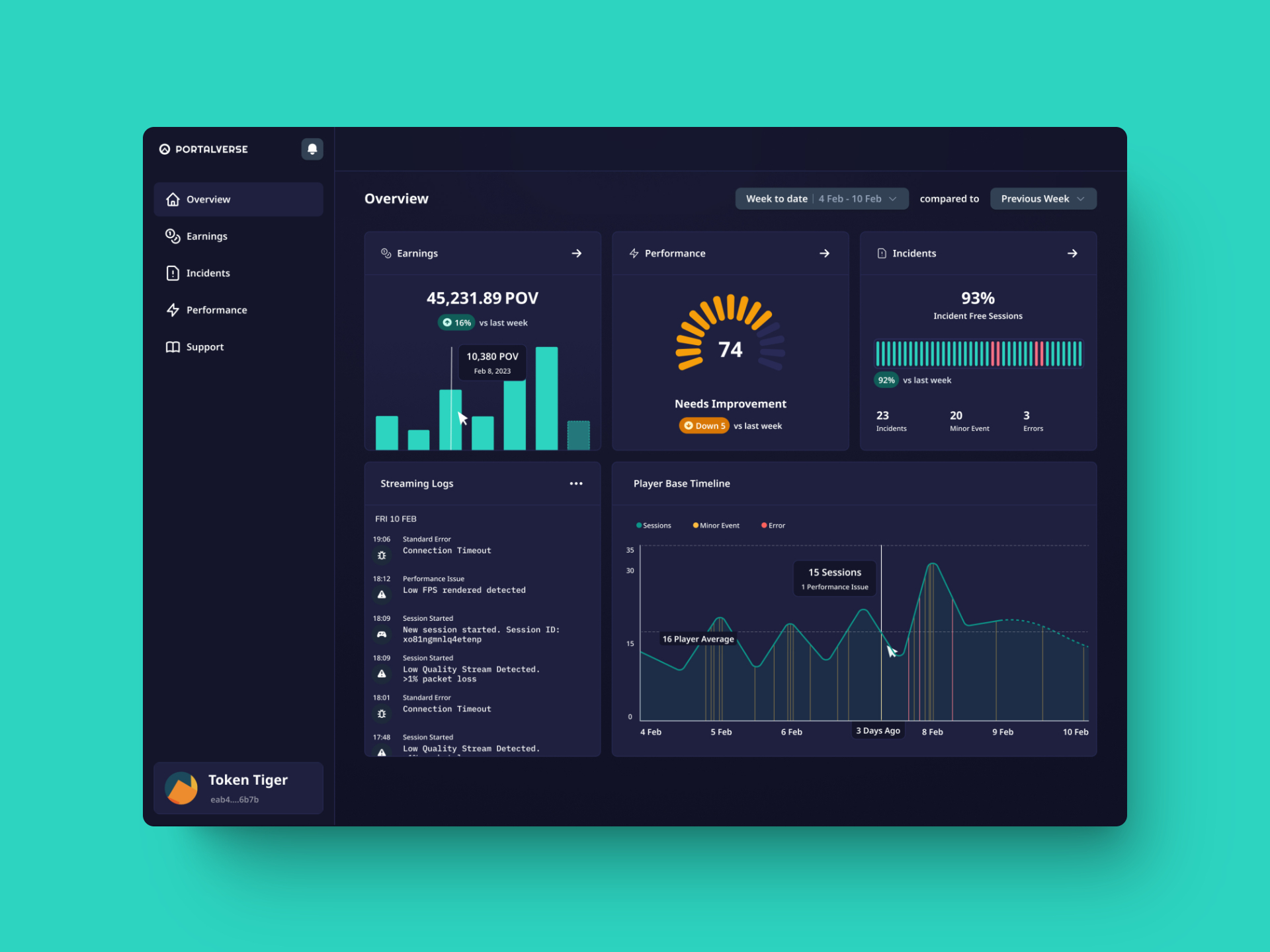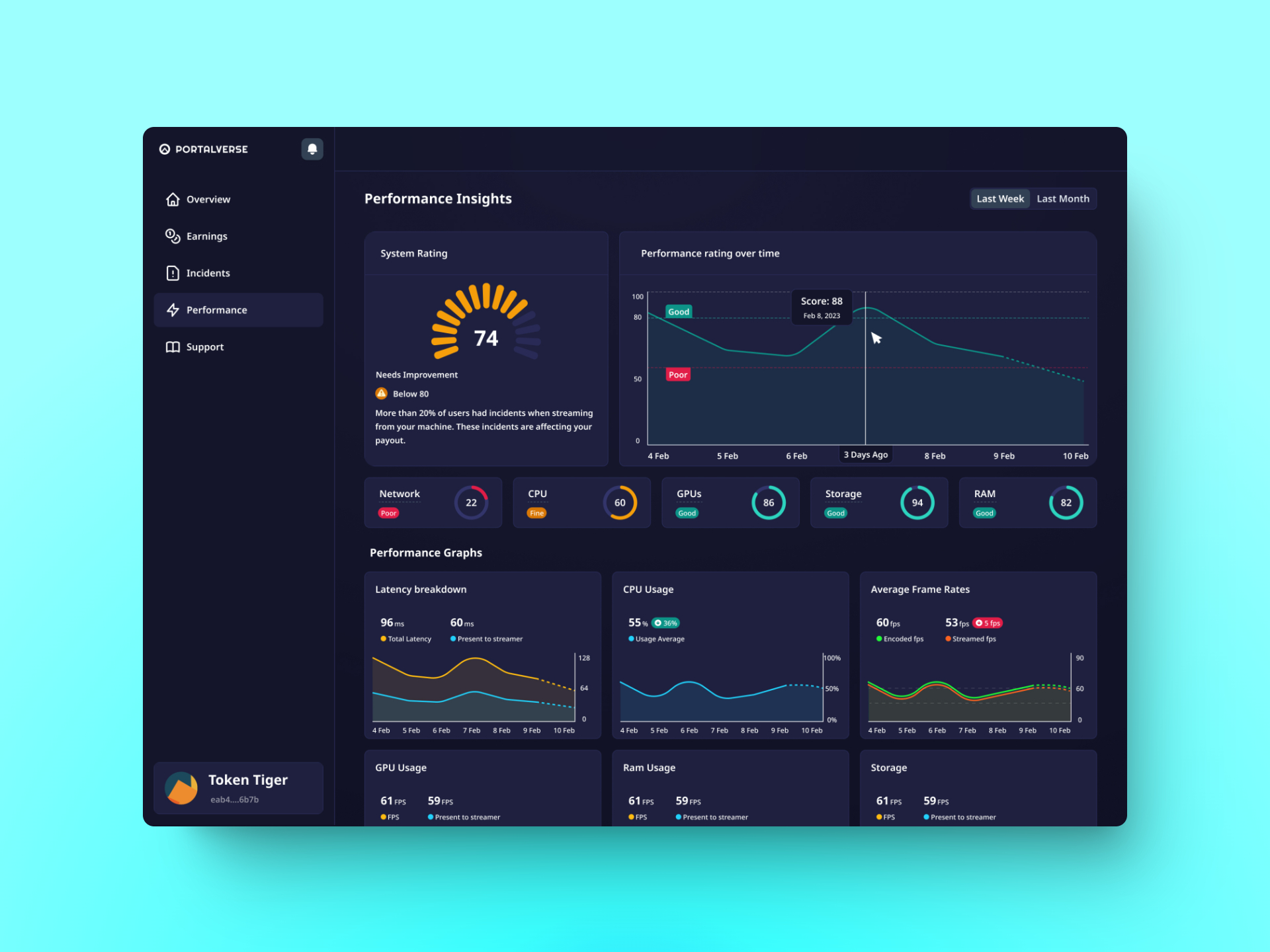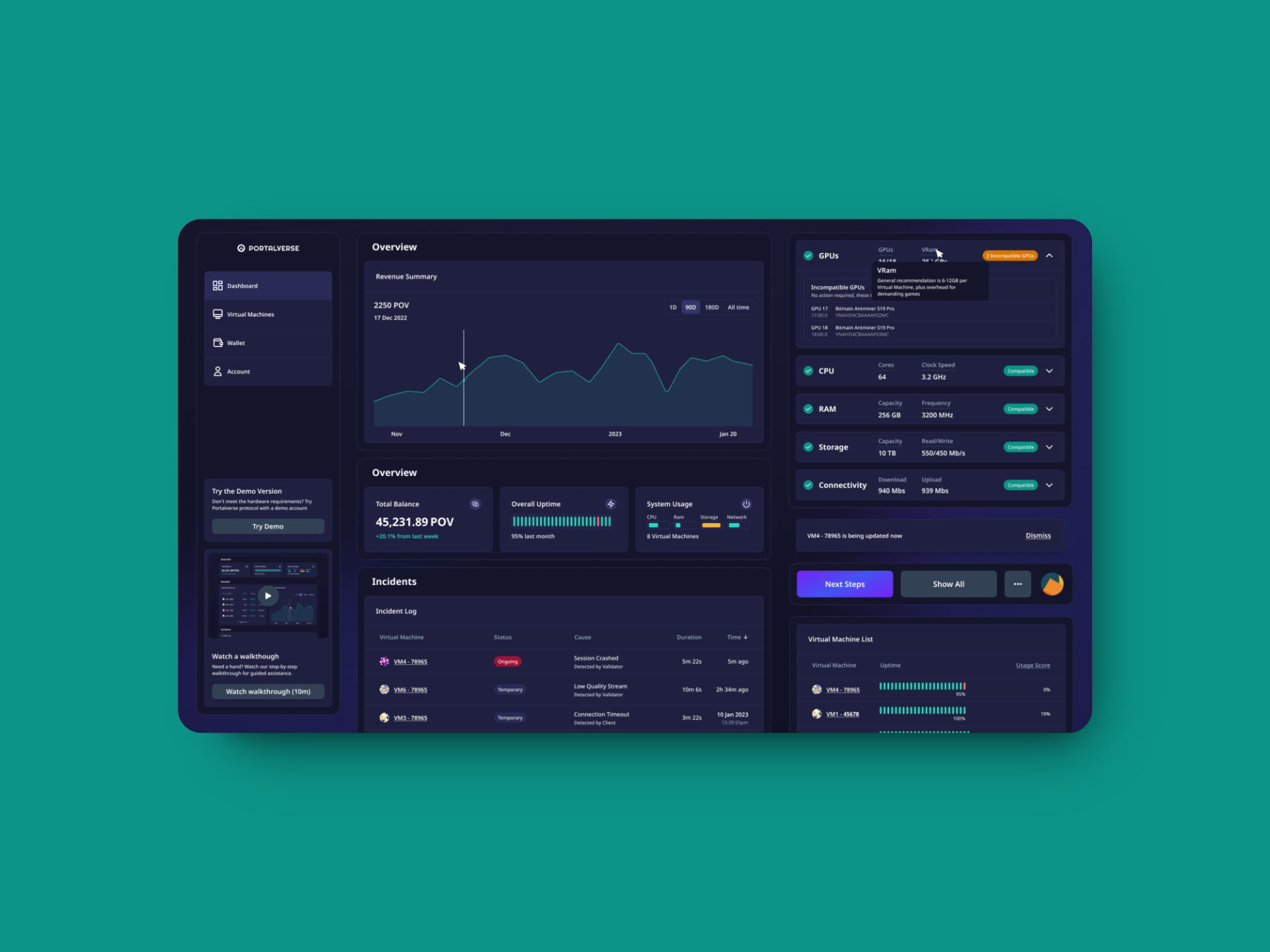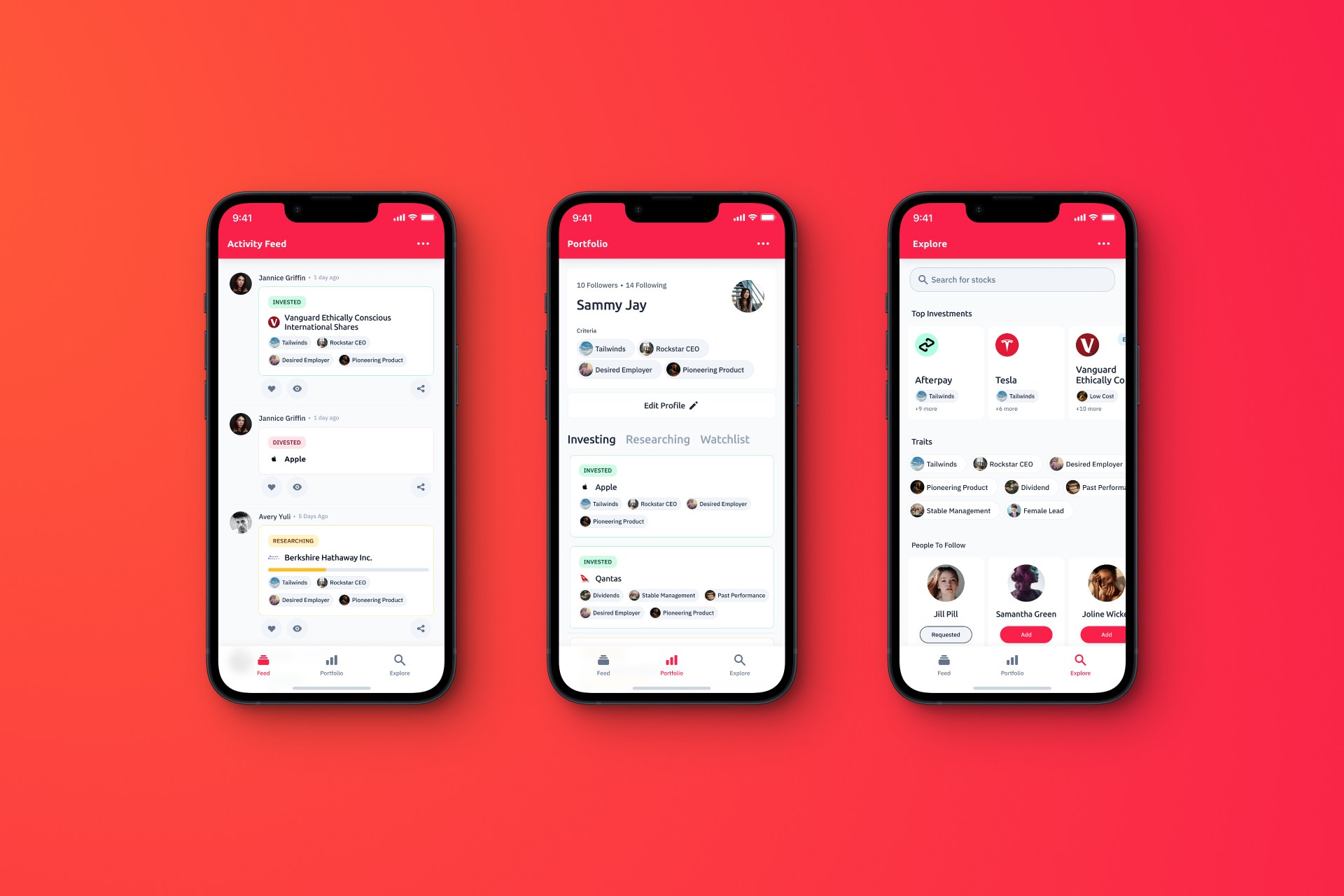Overview
As design lead at Portalverse, my role was to transform their technical demo of a peer-to-peer cloud gaming network into a viable product. To realise this vision, we designed two applications; a B2B2C platform for cloud streaming providers and a consumer app for cloud gamers (learn more here).
Our target users were cryptocurrency mining operators seeking new opportunities to make money with their powerful hardware. The Portalverse Protocol enabled mining operators to provide streaming services using their existing mining hardware.
This service enabled our users to become cloud game streaming providers. We embarked on creating a web-based platform to; monitor their earnings, manage virtual machines and troubleshoot any issues.

What is Portalverse?
Portalverse is a decentralised rendering protocol, or put simply: a better way to stream games from the cloud. Cloud gaming is a widely recognised solution to improve the gaming experience for users by removing costly hardware requirements and allowing most devices to be used as a gaming machine, however, some of the downsides of cloud gaming are that there are often high latency issues for users and cost issues for service providers. Portalverse attempts to resolve this tension with the innovative use of decentralised technology.
In simple terms, similar to how Uber uses privately owned vehicles to offer ridesharing, the Portalverse draws on existing hardware in the crypto-mining ecosystem to offer cloud gaming services.
Context and Challenges
There was a major structural change in the hardware demands of cryptocurrency. Ethereum (the second largest cryptocurrency) was changing how it worked, no longer needing powerful mining infrastructure to operate. Mining operators were rushing to find new ways to make money on their expensive hardware.
Portalverse presented crypto miners an opportunity; to repurpose their hardware away from proof of work mining to become cloud gaming providers.
There were some major differences between a cryptocurrency miner and a cloud gaming provider however the hardware crossover was significant enough for a transition with a modest investment. Medium-sized mining operations generally used gaming GPUs for their mining activities which were the most expensive hardware cost for cloud gaming providers.
Challenges for our vendors
Participation of our cloud providers was essential, as without them there is no cloud gaming service. We connected with a broad group of miners to discuss their concerns, current workflows and hardware capabilities.
Key Features
In response to the challenges faced by our target users, we set out a few must-have features.
Onboarding audit for vendors
Cloud gaming services have extra connectivity and hardware requirements which cryptocurrency mining does not. As such during the onboarding process mining operators need to know what changes they need to make to their system. Tests needs to be run for hardware compatibility and connectivity. After that a recommended number of virtual machines can be provided.

Performance Machine
Managing virtual machines was unique to our protocol instead of mining other cryptocurrencies. Miners were unfamiliar with this and were eager to have a tool to simplify the process of troubleshooting, updating, creating and monitoring them.


